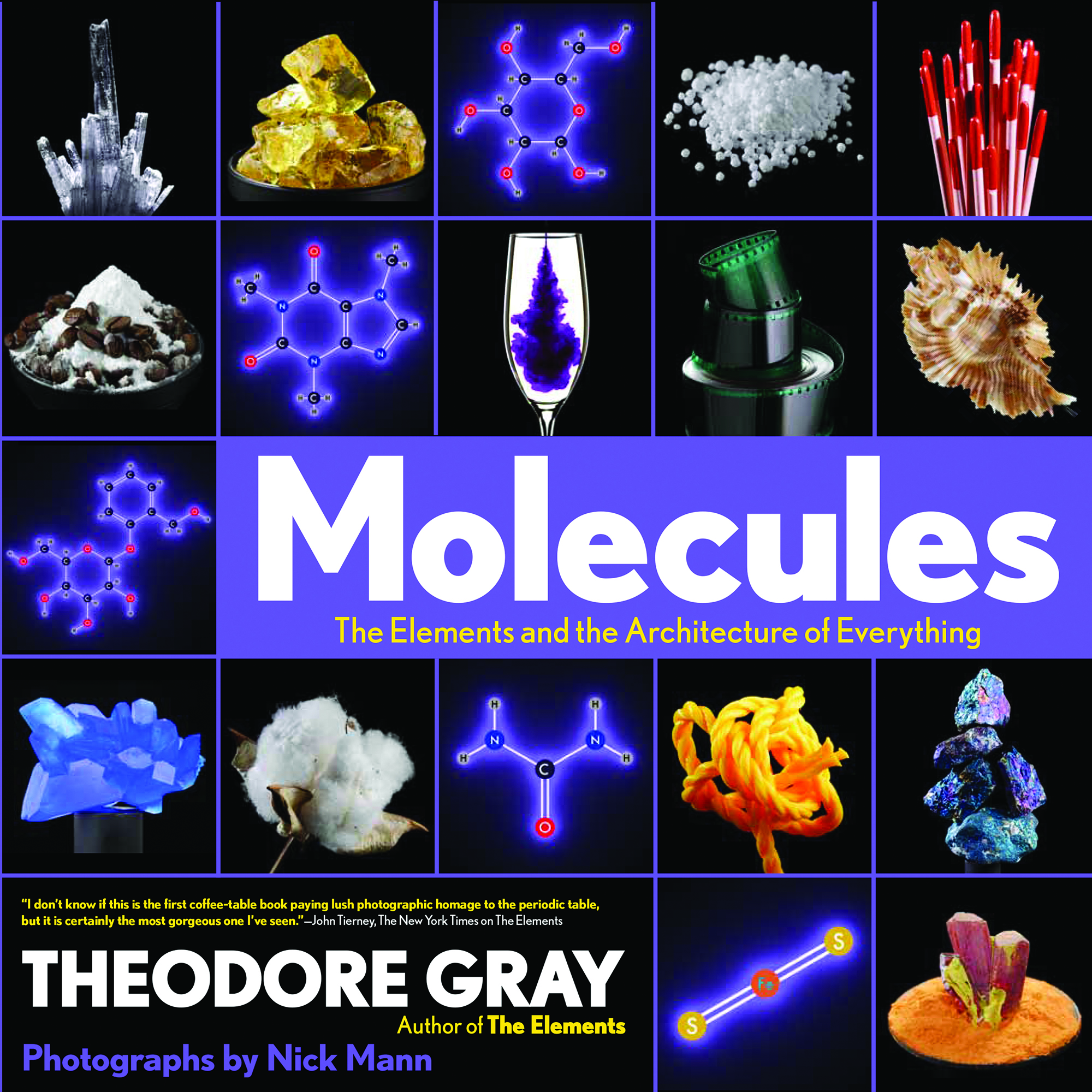Theodore Gray
Molecules: The Elements and the Architecture of Everything
(Black Dog & Leventhal; 2014)
 This is another of my Christmas acquisitions. It is a large coffee table book of almost 250 pages containing (mostly) photographs and diagrams on a black background with relatively little, but simple, textual explanation. It is a science book for the non- or only-just-scientist in which Gray sets out to show us how everything around us is built.
This is another of my Christmas acquisitions. It is a large coffee table book of almost 250 pages containing (mostly) photographs and diagrams on a black background with relatively little, but simple, textual explanation. It is a science book for the non- or only-just-scientist in which Gray sets out to show us how everything around us is built.
Gray shows how the elements of the periodic table combine to form the molecules that make up our world. Everything is made up of molecules, formed in an infinite variety of ways from the elements. This book explores the most interesting, essential, useful and beautiful of the millions of chemical structures that make up every material in the world. Gray begins with an explanation of how atoms bond to form molecules and compounds, as well as the difference between organic and inorganic chemistry. He then explores the vast array of materials, all built of molecules: soaps and solvents; alcohol and oil; rocks, ropes and fibres; painkillers, sweeteners, perfumes and poisons. All are stunningly photographed and accompanied by chemical diagrams and potted explanations.

This double page spread with a potted introduction to each chapter shows why this book is so brilliant
You’ll want to click the image to get a larger view and appreciate the image fully
I’m originally a chemist, but over 40+ years have forgotten much of what I once knew – and in fact much of what is here I never did know as it is materials science beyond the scope or time of a 1960s/70s chemistry degree (although I had the grounding to work it out). But do not be put off … even if you have no science background at all, you should get a huge amount from this book as it starts with some basic steps, and is all written in very non-scientific language. It doesn’t matter if you don’t understand the detail of the molecular structures shown; you don’t need to as the explanations allow anyone to follow along. There is no hard science here such that you are lost if you don’t understand it. And there are no details of how the compounds discussed are synthesised (if such is even possible in the lab.) – so there’s no need to be scared.
What is here are simple explanations of why many things are the way they are. Why, for instance, tetraethyl lead was added to petrol, how it’s toxic effects were known but ignored and thus why it was eventually banned. Why asbestos is so dangerous. Why plastics work. And even why coins smell. The book ends with a very simple explanation of how the proteins that make up the living world are built – which just reinforces the wonder of life itself.
I found this a fascinating book, which made me realise how much I had missed (or forgotten) of my chemistry degree. I found the chapter on sugars and the one on painkillers especially interesting. Yes, I could have taken more detail, but in fact the balance is right for the interested layman rather than the superannuated chemist.
So yes, I’d recommend this book for anyone who has an interest in how the world around is built and why it works in some of the ways it does. Although if you have a science background you will get more from this book, you don’t need it to appreciate the fascinating nature of “stuff”.
Overall Rating: ★★★★★
